
AMALIENBORG AND FREDERIKSSTADEN
Built in the 1750s, this stately complex was designed by the royal architect, Nicolai Eigtved. Four Rococo palaces, originally home to four noble families, enclose an octagonal square in Frederiksstaden, an aristocratic area built by Frederik V. Christian VII bought the palaces after the Christiansborg Slot burned down in 1794, and the royal family has lived here ever since. It was named after a palace built on this site by Queen Sophie Amalie in the 17th century.
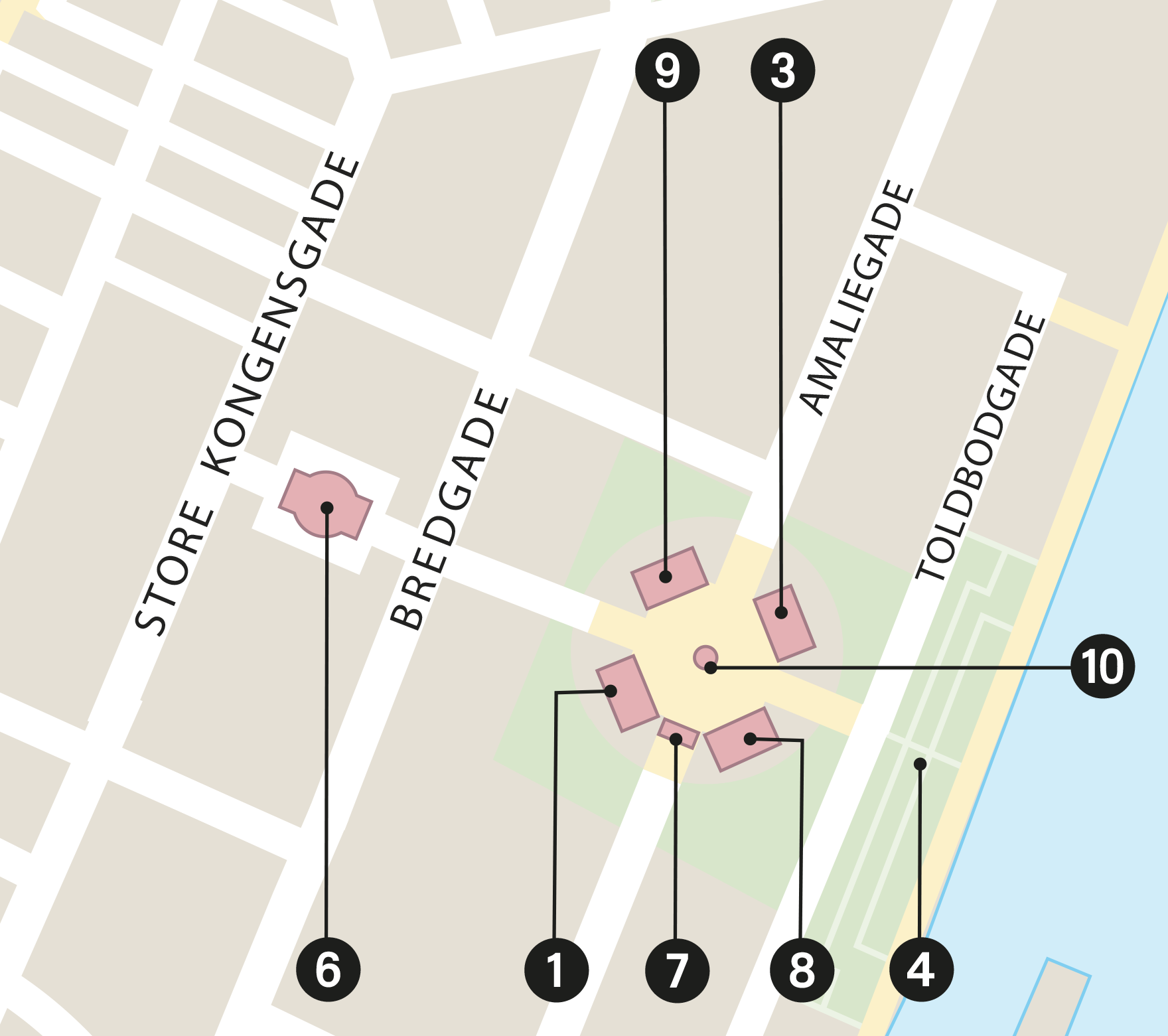
Map of Amalienborg and Frederiksstaden
NEED TO KNOW
![]() Marmorkirken: Frederiksgade 4; 33 15 01 44; open 10am–7pm Mon–Thu, noon–5pm Fri–Sun (tower open mid-Jun–Aug: 1–3pm daily, Sep–mid-Jun: 1–3pm Sat & Sun); adm; www.marmorkirken.dk
Marmorkirken: Frederiksgade 4; 33 15 01 44; open 10am–7pm Mon–Thu, noon–5pm Fri–Sun (tower open mid-Jun–Aug: 1–3pm daily, Sep–mid-Jun: 1–3pm Sat & Sun); adm; www.marmorkirken.dk
![]() Amalienborg Museum: 33 12 21 86; open May–mid-Jun: 10am–4pm daily; mid-Jun–mid-Sep: 10am–5pm daily; mid-Sep–Oct: 10am–4pm daily; closed Nov–Apr: Mon; adm $14, students $10, free with Copenhagen Card; www.dkks.dk
Amalienborg Museum: 33 12 21 86; open May–mid-Jun: 10am–4pm daily; mid-Jun–mid-Sep: 10am–5pm daily; mid-Sep–Oct: 10am–4pm daily; closed Nov–Apr: Mon; adm $14, students $10, free with Copenhagen Card; www.dkks.dk
- Two palaces are closed to the public: Frederik VIII’s and Christian IX’s.
- The guards will not respond well to people sitting on palace steps.
1. Christian VII’s Palace
This palace was one of the first to be completed by the time of Eigtved’s death in 1754. Also known as Moltke Palace—named after its original owner, Count Adam Gottlob Moltke – it is the most expensive palace in the complex and also boasts one of the best Rococo interiors in the entire country.
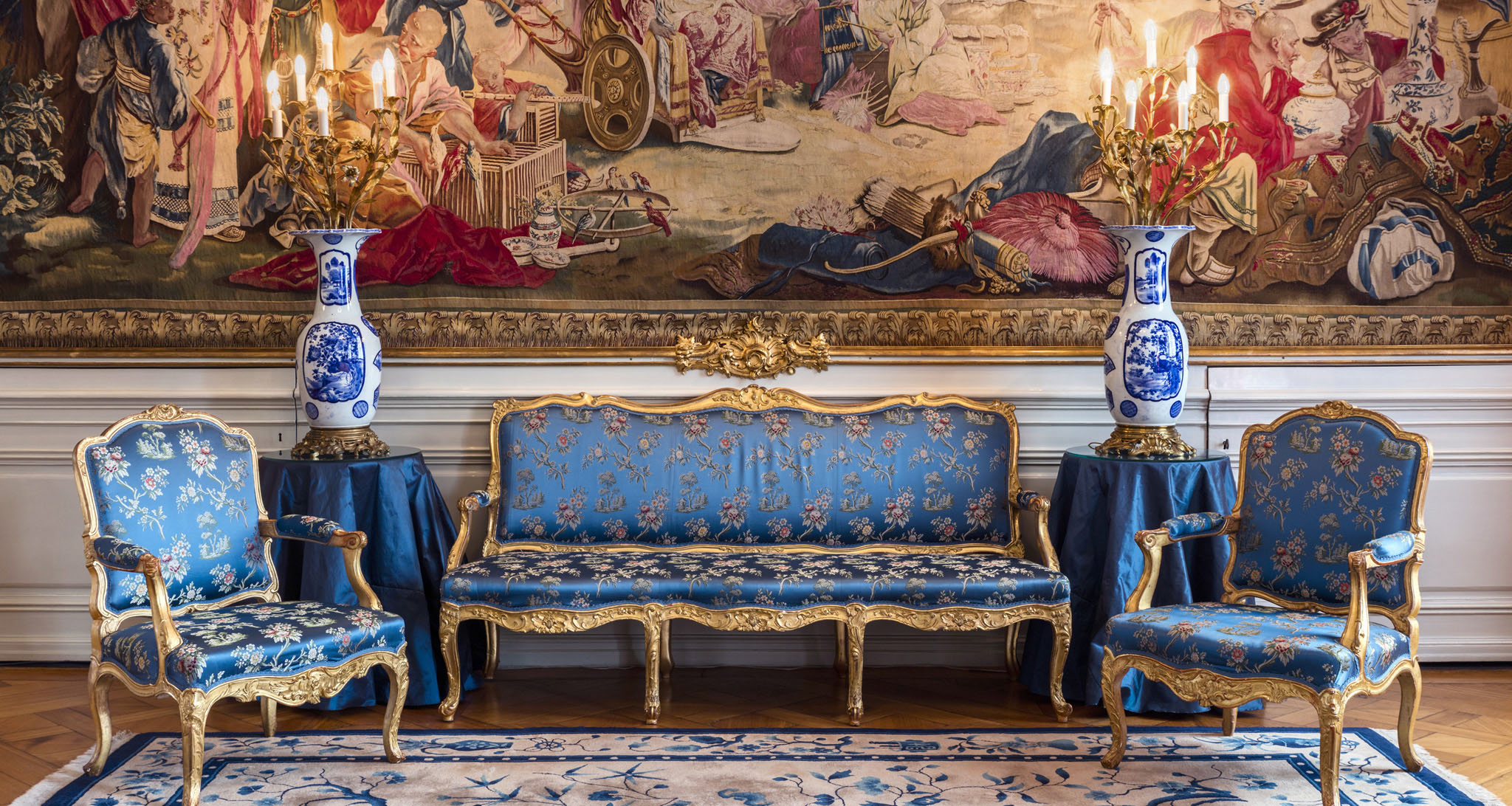
Christian VII’s Palace
2. Palace Guards
When the queen is in residence, the Danish Royal Life Guards stand outside the palace, guarding their monarch in two-hour shifts. At noon, guards from Rosenborg Slot take over, marching through the city streets just before noon.
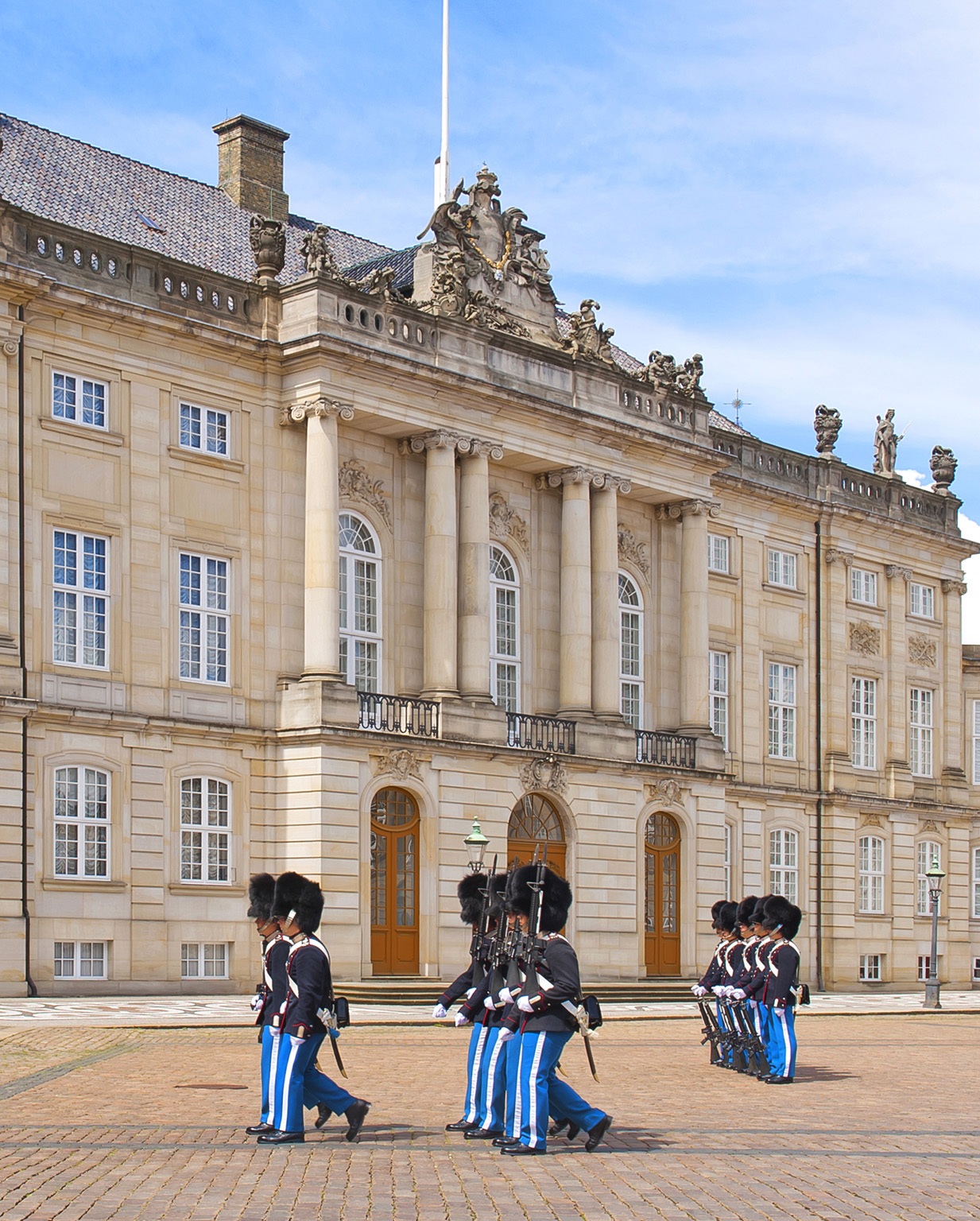
Palace Guards
3. Frederik VIII’s Palace
This palace, which has a clock on its façade, was renamed after Frederik VIII moved in. It is now the residence of Crown Prince Frederik and Crown Princess Mary.
4. Amaliehaven
The Amalie Garden was created in 1983 on the banks of the Harbor, financed by the shipping giant A P Møller and the Christine McKinney Møller Foundation. It has a splendid fountain.
5. The Golden Axis
Marmorkirken and Frederiksstaden lie on a short axis called the Golden Axis, which was considered very important when the Opera House was built.
6. Marmorkirken
Properly called Frederikskirken, the Marble Church got its name on account of plans to build it with Norwegian marble. Its dome, one of the largest in Europe, has a diameter of 102 ft (31 m).
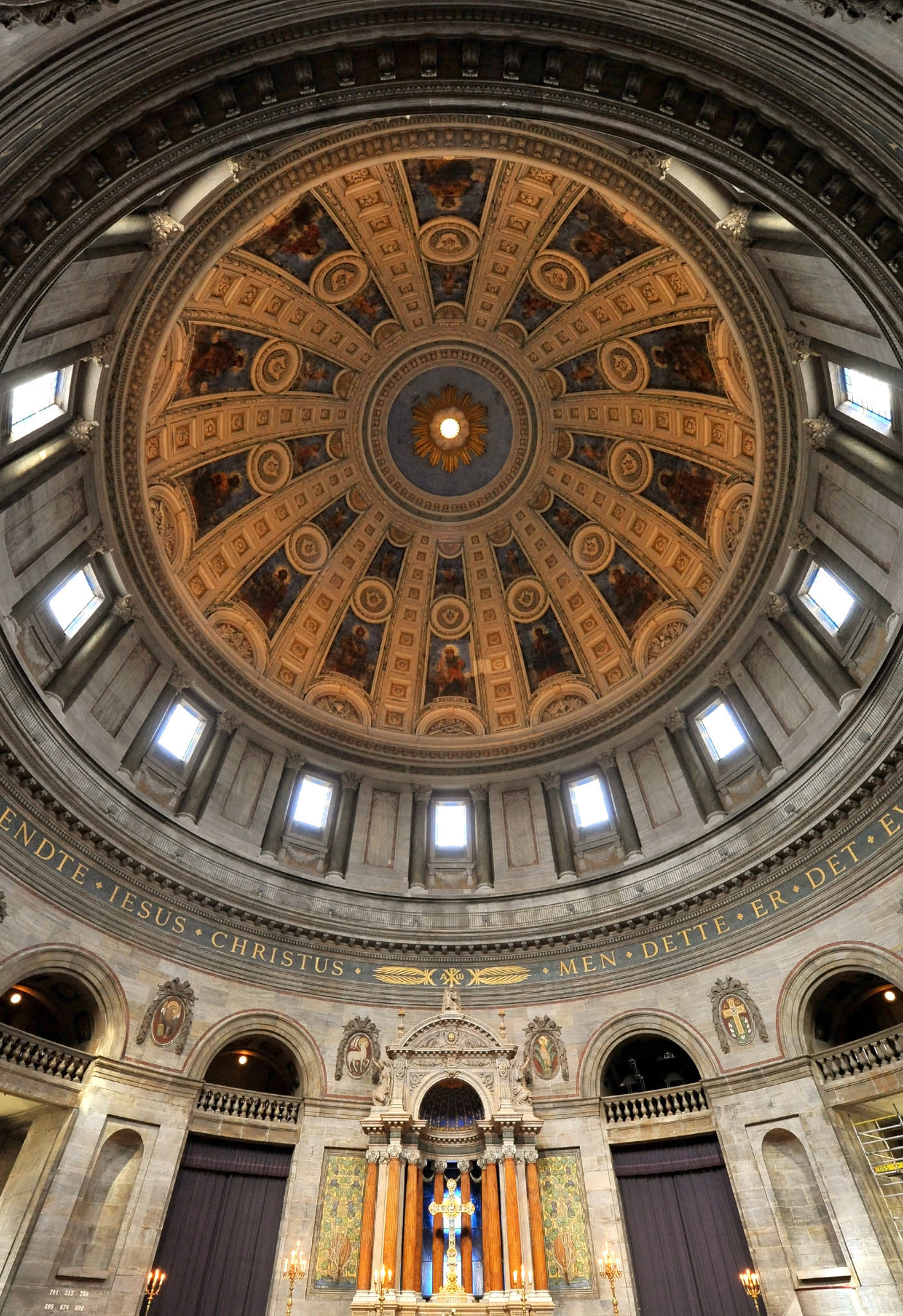
Marmorkirken
7. Colonnade
Christian VII’s royal architect, Caspar Harsdorff, built this Classical-style colonnade in 1794–5. Supported by eight ionic columns, it connects two palaces.
8. Christian IX’s Palace
The first royal family to live here was Crown Prince Frederik VI and his wife (1794). Since 1967, it has been home to Queen Margrethe and Prince Consort Henrik.
9. Christian VIII’s Palace
This is where Crown Prince Frederik lived until his marriage to Australian Mary Donaldson. Part of the palace is open all year round as the Amalienborg Museum.
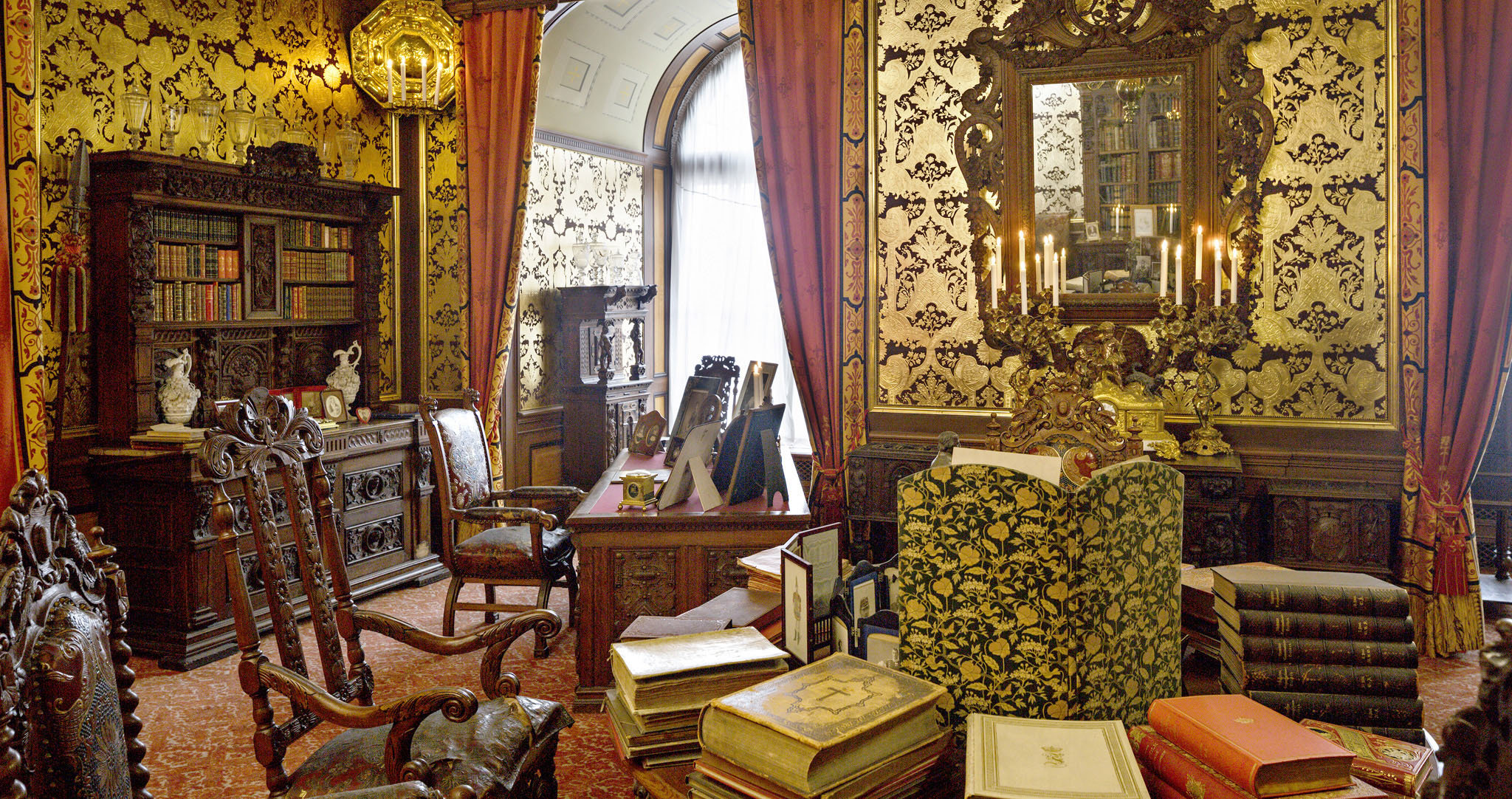
Christian VIII’s Palace
10. Equestrian Statue of Frederik V
Designed and cast (1753–71) by French sculptor Jacques Saly, this statue of Frederik V is said to have cost four times as much as Amalienborg itself.
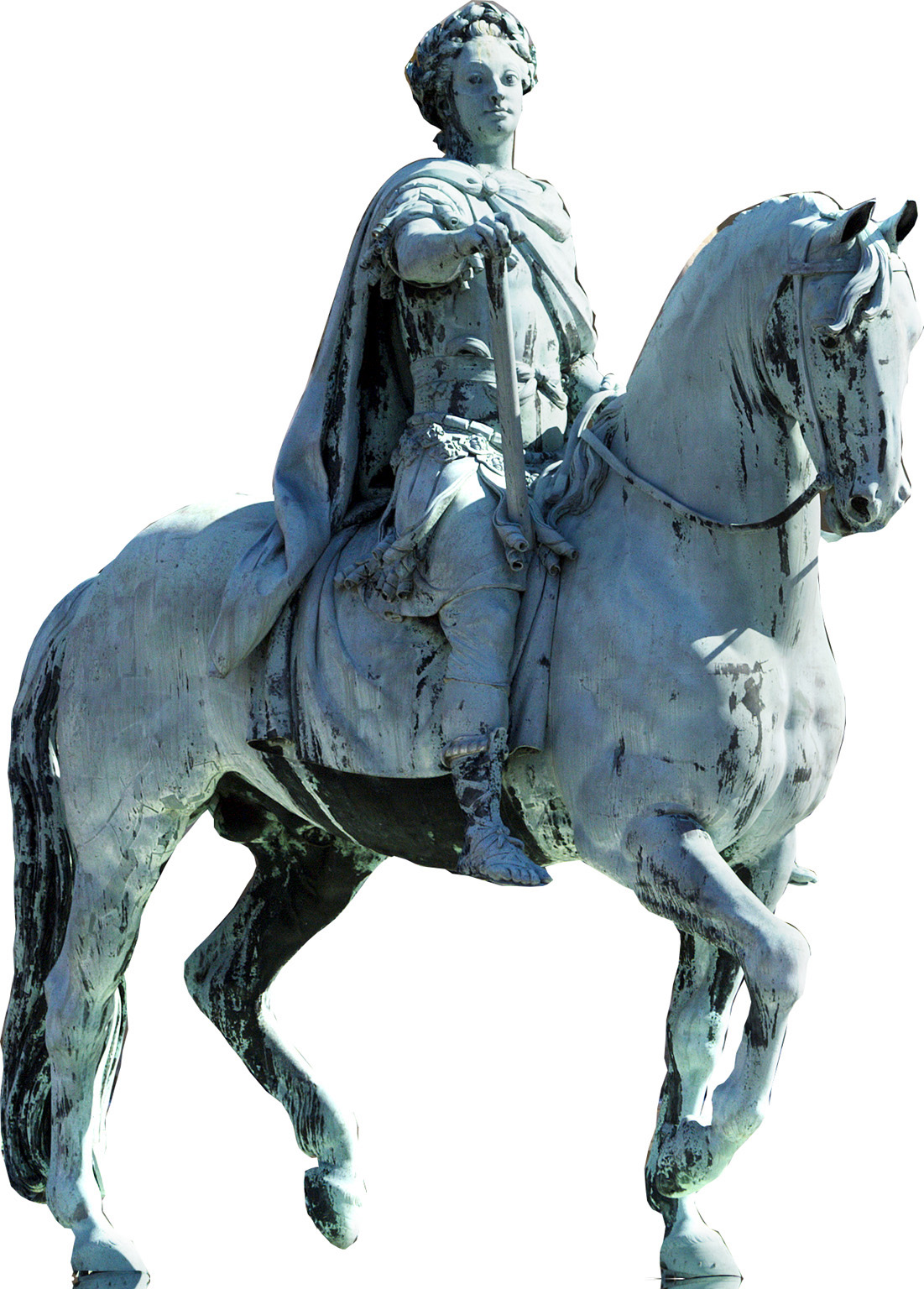
Equestrian Statue of Frederik V
THE RUSSIAN CONNECTION
The onion domes of Alexander Nevsky Kirke, the Russian Orthodox Church, are easy to identify. Consecrated in 1883, it was a gift from Czar Alexander III to mark his marriage to the Danish Princess Marie Dagmar in 1866.
